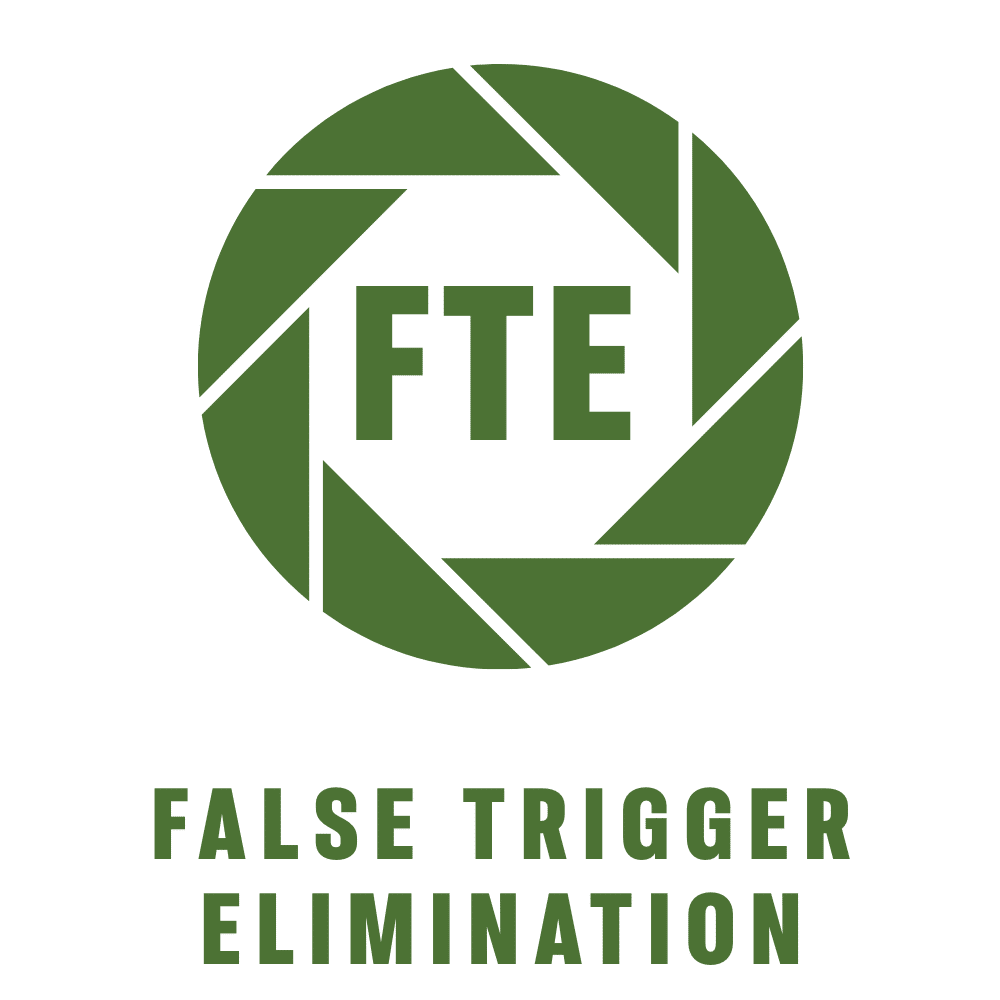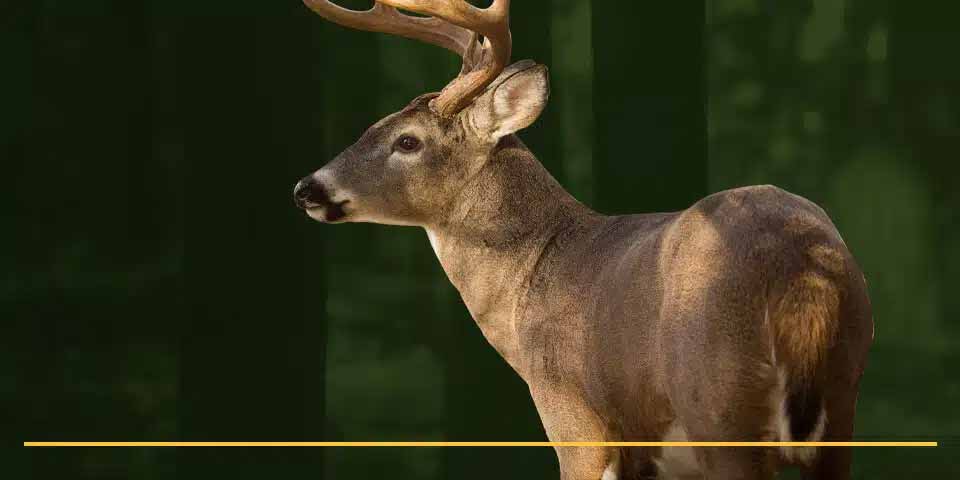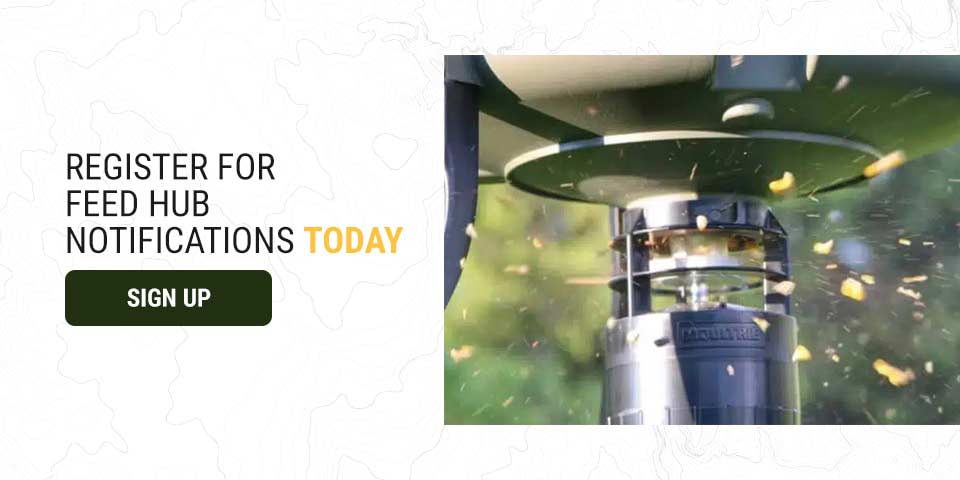What’s the Best Feeding Time for Deer?
Deer are fickle creatures, so it can be challenging to predict when they’ll come out to feed. Fortunately, there are ways to combat this obstacle when hunting season rolls around. When you know what times deer are most likely to feed, understand factors that influence feeding times and invest in advanced tracking technology, you can better target deer for more successful hunting opportunities.
What are the best deer feeding times? How can you make sure you catch them during these times? Read on to find out!
Best Feeding Times for Deer
While deer can eat anytime, many prefer feeding at night to eating in broad daylight. Most deer lay low during the day, making hunting difficult during those hours.
Because they’re crepuscular — active at sunrise and sunset — the major feeding times for deer are the twilight hours of dusk and dawn. During these times, a deer’s eyes take in plenty of light to move around and to spot predators.
Deer typically eat during the early morning hours before going to bed and feeding again in the evening and through the night. However, they can also be active during the day or midday, particularly during the rut, and around full moon periods.
While most deer feed from dusk into the evening, bucks tend to be especially active at night, making dusk an ideal time to hunt them. The deer will likely wait until dark to eat, especially if they’re in a pressured hunting area. They browse open fields for food, then move back to the safety of thickets or woods to chew and watch for danger.
However, remember that the sleeping and eating patterns of deer can be unpredictable. Their routes can change frequently, and they may periodically seek out new feeding and bedding areas. A trail camera and a deer feeder can help you regularly track behavioral patterns and changes.
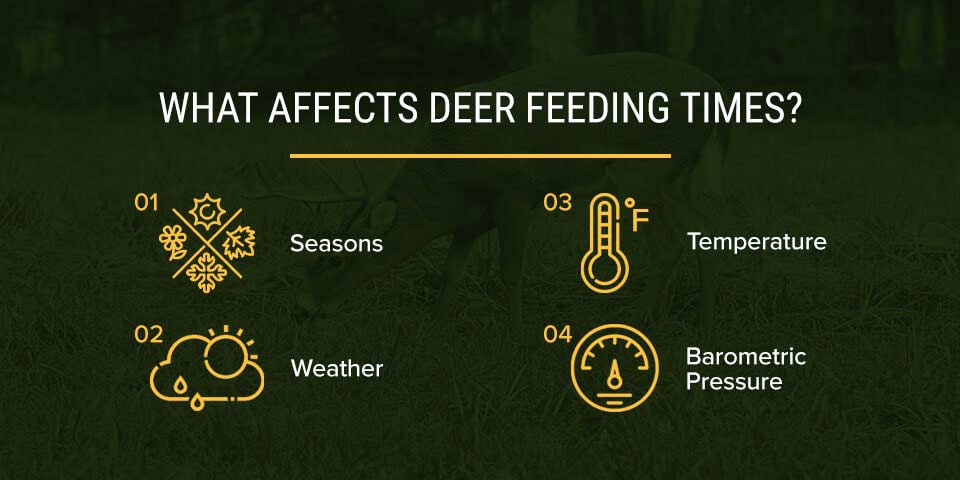
What Affects Deer Feeding Times?
While dawn and dusk are the standard munching times for deer, variables like weather and temperature often affect feeding times. Here are four factors that can determine when deer come out to dine.
1. Seasons
The time of year can largely influence deer feeding patterns. Naturally, they tend to feed most when vegetation is abundant. In most regions, this is between the months of April and September. Deer enjoy alfalfa, soybean and other greens during this season. Those that aren’t in agricultural areas usually feast on native grasses and forbs.
Deer also eat frequently during fall, building up fat to prepare for harsh winter months when food is scarce. Autumn also coincides with the rut, meaning they are more likely to feed in daylight than any other season.
Furthermore, acorns — one of their favorite foods — usually begin to fall in September through October. You’ll likely see deer near oak trees once acorns start dropping. Keep an eye out for the first signs of falling acorns to adjust your hunting strategy accordingly.
When spring makes its debut after winter, new vegetation stimulates more deer activity, and they start to return to their crepuscular schedules. They typically maintain these schedules throughout the summer.
2. Weather
Weather extremities like high winds, blizzards and heavy rains can impact deer feeding schedules. They tend to eat right before storms and immediately after. When wind and precipitation are in full swing, they usually bed down for cover.
3. Temperature
Temperature fluctuations also affect deer activity. When temperatures are higher during daylight hours, many deer slow down and bed down for the day. As temperatures cool down toward the end of the day, you can expect their movement to pick back up.
4. Barometric Pressure
Barometric pressure, or air pressure in the atmosphere, can also impact chowing times. High barometric pressure causes calm weather and clear skies, while low pressure brings clouds and rain. A high, stable barometer indicates a good time for hunting.
How Can Deer Feeder Timers Help?
A deer feeder with a digital timer attracts deer by providing them with a consistent food source. It can lure deer throughout the day to create regular feeding schedules. It’s also easy to use — simply set the timer for the time of day you plan to hunt.
Over time, the deer learn to show up to eat during this time. If you set the timer to distribute food during the day, it can train deer to eat during daylight hours more.
How Can Moultrie Mobile’s New Feed Hub Help?
At Moultrie Mobile, we specialize in advanced technology for easier and more efficient hunting. Our convenient Feed Hub device provides remote management capabilities for deer feeders, making it easy to monitor and adjust feeding schedules as needed.
When checking your deer feeder, encountering issues like dead batteries or an empty or jammed feeder is highly inconvenient. These issues can also throw a wrench in your hunting plans. Luckily, Feed Hub brings the power and simplicity of cellular technology to your deer feeder.
Feed Hub’s universal design is compatible with all major deer feeder brands. It alerts you when it’s time for a refill, and you can rest assured knowing your feeder is working correctly. Its three-part system includes:
- Feed level detector: The feed level detector mounts to the top of the feeder and measures the remaining feed in the hopper. It communicates this information to the cellular timer.
- Cellular timer: You can install the cellular timer in the feeder kit to replace a standard digital timer. It transmits settings and readings to and from the Moultrie Mobile app.
- Moultrie Mobile app: You can activate and manage Feed Hub with an annual or monthly subscription plan through our app. You can dispense feed on demand, check feed levels and adjust feeding schedules anywhere and anytime. Our subscription plans have no contracts or hidden fees, so you don’t have to worry about any surprise bills!
Register for Feed Hub Notifications Today
When you choose Moultrie Mobile for deer feeder monitoring technology, you can enjoy an easy-to-use platform right at your fingertips. Signing up for Feed Hub notifications is simple through our feature-packed app.
You can remotely set and adjust feed cycles, customizing them to your ideal hunting schedule. Save time and money by remotely viewing battery and feed levels, using the app to dispense feed before or during a hunting excursion. Thanks to Feed Hub, you can better prepare for battery and feed replenishments.
We have the tools you need for better scouting and hunting. Sign up for Feed Hub notifications with Moultrie Mobile today!
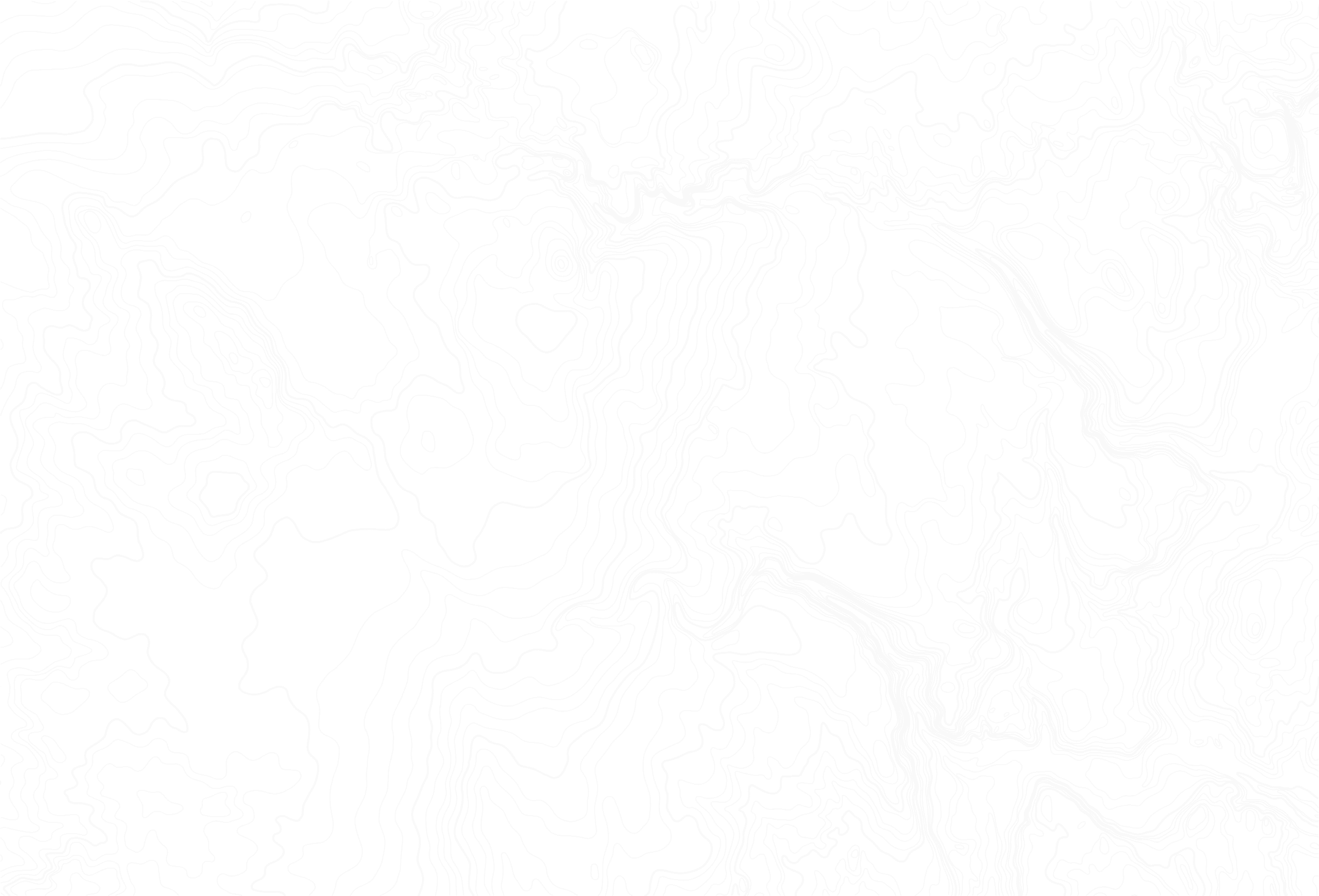

Featured
Juicy homemade jalapeno cheddar brats are perfect for grilling all summer long. They’re packed with all the right seasonings and fresh ingredients, making them extra tasty.

Featured
MeatEater and Moultrie Mobile join teams to bring hunters closer to nature.

Featured
These wild turkey skewers are tender and smothered in a homemade teriyaki glaze. Wild turkey sometimes gets a bad reputation for being a tough meat but when prepared properly using the steps in this recipe, the results are amazing.

